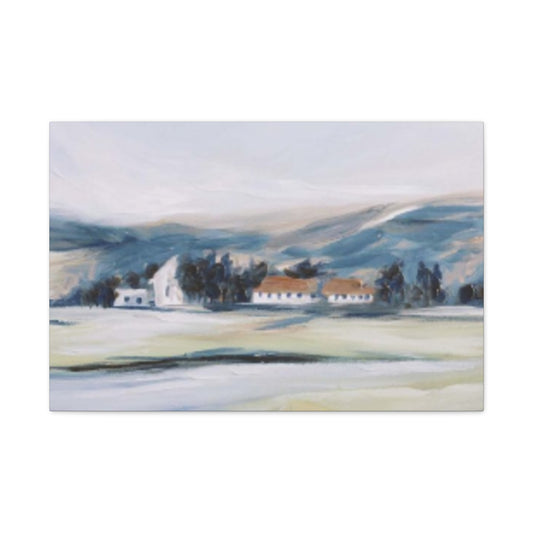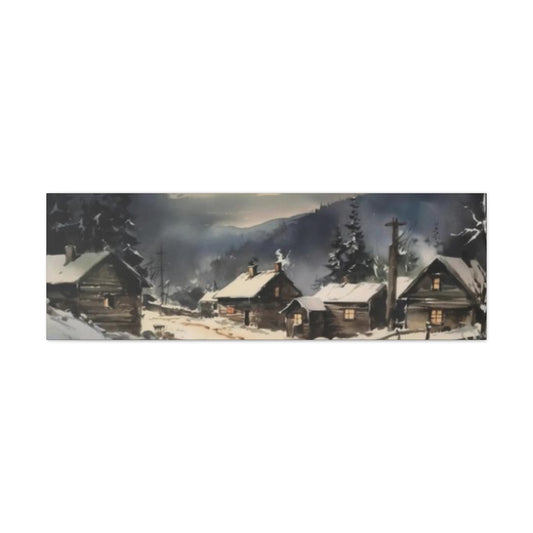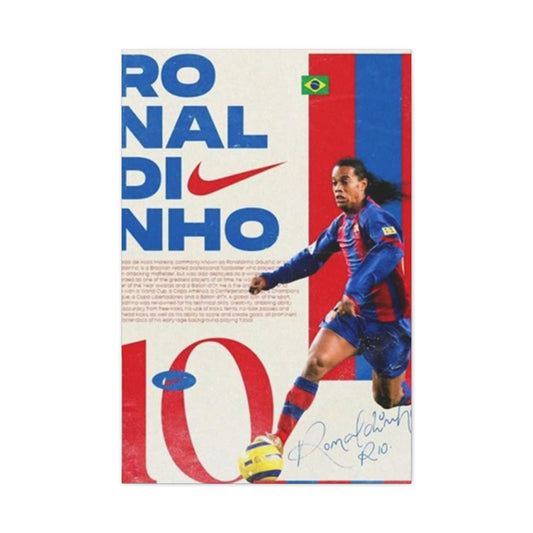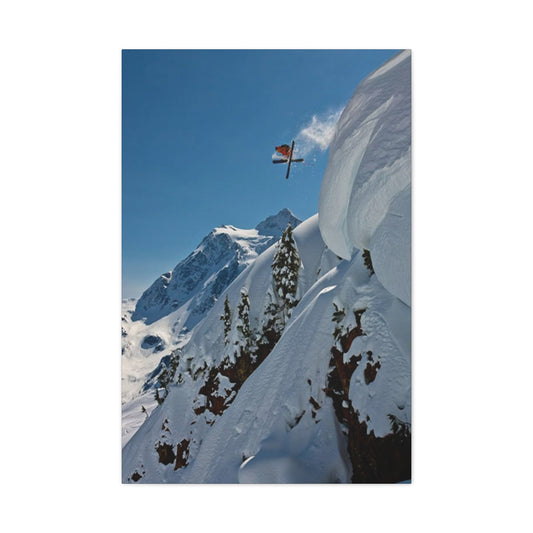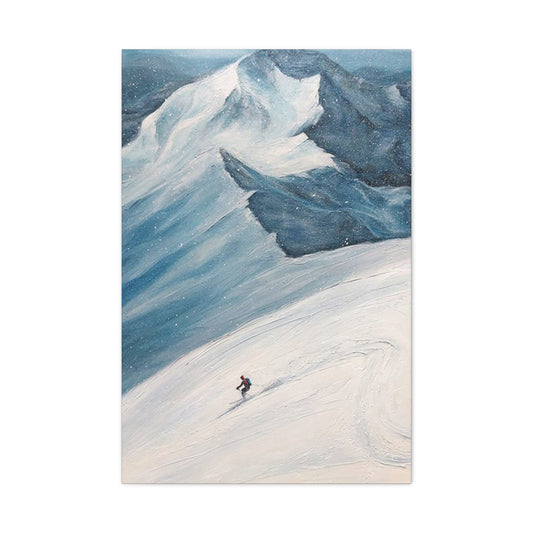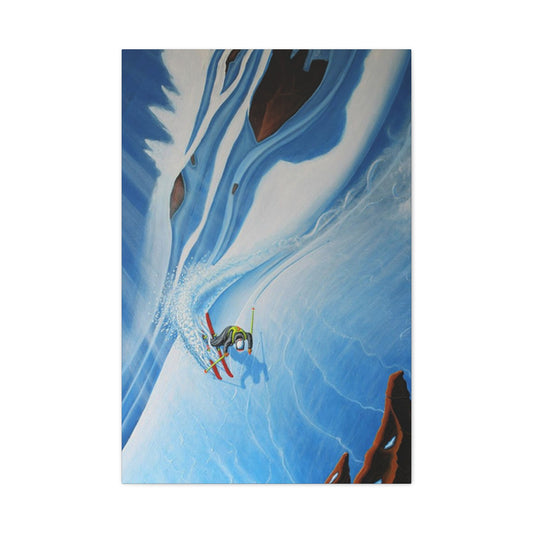Are you feeling uninspired by the usual still life photography ideas? Do you think you’ve already tried everything and that there’s nothing new to explore with still life subjects? No need to worry! Everyone experiences creative blocks from time to time, and sometimes, all it takes is a fresh perspective to get your creativity flowing again. Here are 10 exciting still life photography concepts to help you reignite your passion for this genre. These ideas are simple, versatile, and don’t require specialized equipment or rare props. One of these ideas might be just the spark you need for your next project.
1. Explore Shapes and Symbolism in Your Photography
Metaphors are one of the most powerful storytelling tools in still life photography. By using everyday objects and finding connections between them, you can convey deep narratives and evoke emotions without needing any words. When we think of still life photography, we often think of static objects arranged to be photographed in a visually appealing way. However, by utilizing symbolism and shapes, you can elevate your compositions and create visually captivating works that go beyond just aesthetic beauty. These techniques allow you to convey abstract ideas, societal themes, or personal narratives in a way that invites your audience to engage more deeply with the image.
The first step in this creative process is to recognize that even the most ordinary, mundane objects can hold significant meaning when connected by a common trait. This trait can be something as simple as a shape, color, texture, or material. These subtle connections between objects allow you to create rich, layered visual metaphors that might not be immediately obvious at first glance but reveal themselves as the viewer delves deeper into the photograph. This approach to still life photography encourages you to think about the relationships between objects and their underlying meanings. It's not just about how the objects look next to one another—it’s about how their shared characteristics can symbolize something bigger or tell a more profound story.
Take, for example, the use of shape as a symbolic device. Shapes are inherent to all objects, and by focusing on the shapes that an object takes, you can create connections with other objects that share a similar geometry. One simple and effective example of this concept is the roundness of both a globe and a CD. Both share the same spherical shape, but each object carries a very different connotation. A globe represents the world, geography, and exploration, while a CD represents music, entertainment, and sound. By placing a CD inside a wooden frame featuring an Earth motif, you create an instant metaphor—the world is full of music. This approach combines both simplicity and symbolism, where the physical attributes of the objects act as a bridge to a more profound, conceptual message.
This technique works particularly well in minimalist still life photography, where the focus is on the elegance and simplicity of the arrangement. Minimalism allows you to pair seemingly unrelated objects and find a deeper connection between them through their shapes. By using geometric shapes like circles, squares, or triangles, you can create a harmony of forms that communicate a much larger narrative than the individual objects could on their own. A square-shaped box, for instance, could serve as the foundation for an entirely new world, where its edges represent boundaries and limits, while its flat surface symbolizes a canvas for creation.
Exploring shape through photography also allows for a unique artistic approach. Think about the way the human eye is naturally drawn to certain shapes, and how these shapes can be arranged to evoke specific emotions or ideas. A circle, for example, can represent continuity, unity, or wholeness, making it an excellent shape to pair with objects that convey similar meanings, like a sun or a clock. On the other hand, a jagged triangle or a sharp angle can symbolize conflict or disruption, making it ideal to use with objects that suggest tension or chaos.
|
Related Catagories: |
Once you begin to think in terms of shapes and their symbolic meanings, the opportunities for creative still life photography open up dramatically. You can move beyond just arranging objects that "look nice together" and instead curate compositions that have personal or social significance. For instance, you could take everyday round objects—such as tennis balls, camera lenses, or even the moon—and explore how they connect visually and conceptually. Think about how a tennis ball, often associated with play and sport, might look next to a camera lens, which signifies observation and focus. The juxtaposition of these two objects could represent the tension between leisure and purpose, or the balance between fun and professionalism.
Another example might involve transforming something as simple as a stack of oranges into a whimsical, imaginative scene. By adding string to the arrangement, you can turn the oranges into floating balloons, creating a metaphor about the fragility and fleeting nature of moments. Oranges, often linked with vitality and energy, can be given a completely different layer of meaning through their transformation into balloons—symbols of celebration and joy. This transformation takes everyday objects and recontextualizes them, forcing the viewer to reconsider their usual associations and adding new depth to the image.
Even the most straightforward objects can be given new meanings through this type of exploration. Consider something as ordinary as a book or a stack of books. By arranging these books in a way that mimics the foundations of a house, you transform them from objects for reading into symbols of knowledge as the cornerstone of society. This subtle shift in perspective allows you to communicate a much larger theme about education, culture, or the structure of human civilization. Instead of merely photographing a pile of books, you could be commenting on the foundational role that learning plays in shaping our world.
The beauty of still life photography is that you can constantly find new ways to elevate the ordinary into the extraordinary. By focusing on the shapes of the objects you choose and finding connections between them, you can tell a wide array of stories. The objects themselves might remain simple, but the way they are arranged and the way their shapes relate to one another can transform the entire composition. Your role as a photographer is to guide the viewer’s eye, directing them to discover new meanings in what might otherwise seem like mundane or unrelated objects.
Additionally, the color of the objects you choose can play a significant role in this process of symbolic storytelling. Colors, much like shapes, evoke powerful emotions and ideas. A photograph that focuses on a yellow object, for example, may instantly communicate warmth, happiness, and optimism, while a blue object might evoke calmness, serenity, or sadness. By pairing objects with similar colors, you can emphasize a theme of unity or continuity. Alternatively, you can contrast objects with opposing colors to highlight tension or discord, adding another layer of depth to your narrative.
Texture is another element that contributes to the symbolism of your photograph. A rough, weathered surface can symbolize the passage of time, struggle, or resilience, while a smooth, polished surface might convey modernity, cleanliness, or perfection. When selecting objects for your still life composition, think about the textures they possess and how they contribute to the overall message you want to communicate. The texture of an object can subtly enhance the viewer's understanding of its meaning.
In the end, the key to using shapes and symbolism in still life photography is to think creatively about the connections between objects and how these connections can be used to tell a story. The simplest objects, when viewed through an artistic and metaphorical lens, can reveal much more than their surface appearance suggests. A single round object like a globe or a tennis ball can take on profound meaning depending on the context in which it is placed, and the relationships between these objects can invite viewers to interpret the scene in a variety of ways.
2. Create Words Using Objects in Your Photos
Sometimes, the simplest way to convey a message through your photography is by creating that message directly. This is where the concept of creating words or even entire sentences out of everyday objects comes into play. In still life photography, this technique allows you to infuse humor, wit, and a personal touch into your compositions, creating images that are not only visually compelling but also linguistically engaging. By using the natural form and texture of objects, you can craft an image that communicates both visually and conceptually, turning your still life into a meaningful narrative.
One of the most exciting aspects of this technique is how versatile it is. You don’t need to rely on elaborate setups or high-tech equipment to create a powerful photographic message. All you need is your imagination and a few simple objects that, when arranged thoughtfully, can spell out a word, a phrase, or even a sentence. This kind of creativity is liberating—it opens up new possibilities in still life photography, allowing you to experiment with both visual design and language.
Start by considering the theme you want to convey in your photography. The beauty of this method is that you can select a wide range of objects based on the theme or feeling you want to express. If you’re passionate about food photography, for example, you could create a playful phrase using edible items. Imagine crafting the letter "C" from a half-eaten cookie or using a strip of orange zest to form the letter "S". These elements not only form letters but also bring a sense of warmth and texture to your composition. You could even create a fun, food-related message, such as "Let’s Eat" with cupcakes, fruit, and syrup, which would bring both visual and sensory appeal to the image.
But the possibilities don't stop with food. You can also use everyday objects like toys, stationery, or household items to form your words. Try using paper clips to form a letter, arranging pencils to spell a phrase, or even using buttons or thread to craft letters in a way that speaks to both the materials and the meaning of your text. The goal is to choose objects that not only help form the words but also add depth and dimension to your overall composition. By doing so, you bring new life to everyday materials, turning them into a key element of your narrative.
If you want to take things up a notch and add more intricacy to your design, you can use a text template to guide your composition. Print out a word or sentence that you want to incorporate into your still life, and then cut out the shape of each letter with an X-Acto knife or precision tool. This technique allows you to create a more polished result, especially if you plan to fill each letter with a different material, such as sugar, confetti, sand, or even small items like seeds, beads, or grains. This method enables you to develop a more intricate and detailed design, where each letter is carefully crafted, bringing both texture and visual interest to the composition.
As you begin to develop this technique, you’ll discover that the real magic lies in how you choose and arrange your objects. Each object carries its own set of associations, and when combined with others, it has the potential to evoke new meanings. For example, using coffee beans to form a word not only creates a text-based image but also brings a rich, warm texture that hints at the aroma and warmth of a freshly brewed cup. By using items such as cinnamon sticks, cocoa powder, or sugar crystals, you can add layers of meaning to the composition that go beyond the visual elements of the word itself.
Similarly, you can take advantage of contrasting materials to create more visual tension and interest. For instance, you could use smooth, glossy chocolate to form the first few letters of your phrase and then contrast it with the sharp, angular edges of crackers or crisps to complete the composition. These visual contrasts serve not only to make the words stand out more vividly but also to introduce a sense of balance and variety in the textures of the composition. By selecting objects that contrast with one another in terms of shape, texture, or even color, you’re able to give your composition an added level of depth and complexity.
|
Related Catagories: |
If you enjoy working with nature-inspired themes, try incorporating leaves, flowers, or seeds into your still life compositions. You could use dried petals to form a soft, flowing "L" or string together twigs to form a rustic "E". This approach introduces organic elements into your design, which can evoke a sense of life, growth, and natural beauty. Additionally, the colors of the natural objects—whether green, brown, or floral—can be used to enhance the emotional impact of the message you’re creating. A phrase like "Grow Together" could be formed from leaves and flowers, imparting not just the words themselves, but also the feeling of growth and unity that comes with the theme.
Using objects to create words also presents a unique opportunity for you to play with different compositions and perspectives. Consider shooting from overhead for a symmetrical and ordered arrangement, or try different angles and lighting setups to enhance the dimensionality of your still life. By adjusting the way you light your scene, you can add dramatic shadows or highlights, bringing attention to specific parts of the composition and enhancing the overall visual impact. Playing with the positioning of objects within the frame allows you to explore how the word is perceived, giving you full control over how the viewer engages with the image.
When crafting a message, consider the emotional tone that you want to evoke. A playful phrase formed with colorful candy or toys will naturally communicate a sense of fun, whimsy, and lightheartedness. On the other hand, a more minimalist approach using black and white objects can lend a sense of elegance and sophistication to the composition. The way you use color and texture can communicate just as much about the tone of the message as the words themselves. Take the time to choose objects that align with the sentiment you want to convey, and don't be afraid to experiment with different combinations.
The beauty of using objects to spell out words or phrases in your photography is that it transforms the objects themselves into active participants in the narrative. Each element becomes more than just a static object—it becomes a part of the story you’re telling. Whether you're using edible items, office supplies, natural elements, or even abstract materials, these objects can serve as visual metaphors, further deepening the meaning of your work. For example, using a candle to form the letter "I" could symbolize light or warmth, while a string of pearls could represent something elegant and refined. These subtle symbols contribute to the richness of your composition, inviting viewers to interpret the image beyond just the words they see.
3. Design Intricate Patterns for Your Composition
Patterns are universally captivating and have a magical ability to bring a sense of order and visual rhythm to any composition, especially in still life photography. Whether you’re arranging objects on a table, spreading them across a flat surface, or stacking them in some creative fashion, the repetition of shapes, colors, or textures can create a visually appealing flow that guides the viewer’s eye through the scene. By using patterns, you can inject a sense of harmony into your composition, while also creating an opportunity for dynamic variation.
One of the most beautiful aspects of using patterns in still life photography is the versatility they provide. You don’t need to rely on complex props or extravagant setups to create a stunning image. Instead, you can start with a few simple objects and experiment with their arrangement to form an engaging pattern that captivates the viewer. The real magic lies in how you organize those items, whether you choose to arrange them in neat rows, circles, spirals, or irregular groupings.
When designing intricate patterns, it’s important to pick a theme that resonates with your creative vision. For instance, you could use fruits, candies, ceramics, leaves, or even everyday items like books or utensils as your base objects. Each theme offers its own set of visual opportunities. Fruits, for example, can bring vibrancy and texture to your composition, while ceramics provide an elegant and timeless feel. The key is to select objects that align with your message and evoke the mood you wish to convey.
Once you've chosen your theme, you can begin arranging the objects in a way that emphasizes the pattern. This could mean grouping items by size, starting with larger items in the center and gradually moving to smaller objects around them, or placing objects symmetrically for balance. Symmetry is a powerful tool in pattern design, as it can bring a sense of order and calm to your photo. A balanced composition also makes it easier for the viewer to connect with the image, as the pattern offers a visual structure that is familiar and comforting.
The beauty of overhead shots is that they allow you to capture the full extent of the pattern’s rhythm. By photographing from above, you can see how the objects interact with one another and how they form a cohesive whole. The bird’s-eye view provides a clear perspective of the overall composition, making it easier to see the patterns' flow and structure. Overhead shots also help eliminate any distractions from the background, ensuring that the focus remains on the pattern and the objects within it. It is important to remember that when photographing a pattern from this angle, the objects should be organized with care and precision. A cluttered or chaotic arrangement can detract from the impact of the pattern, making it harder for the viewer to appreciate the design.
You don’t have to be afraid of breaking the uniformity of your pattern, either. While repetition plays a crucial role in establishing a strong visual rhythm, introducing slight variations can make your pattern even more dynamic. For instance, consider incorporating small contrasting elements into your design, such as a few unexpected colors, textures, or even shapes. These variations can add interest and depth to the composition, ensuring that the viewer’s eye keeps moving across the scene, discovering new details along the way.
For example, let’s say you’re creating a pattern with cookies and sweets. Rather than keeping the objects perfectly uniform, you could introduce a twist of lemon zest, a few star anise, or a drizzle of chocolate to break up the uniformity. These little touches will not only add variety to the scene but will also enhance the visual experience by creating focal points within the pattern. The key is to introduce contrast in a way that doesn’t disrupt the harmony but rather complements it. These subtle details contribute to the overall richness of the composition, giving it more texture and dimension.
When experimenting with color, don’t be afraid to step away from monotones. In many cases, using a single color palette can create a sense of uniformity, but it can also risk making the composition feel flat or overly predictable. Breaking up the rhythm with different hues can bring life to your pattern, creating a more vibrant and engaging image. For example, you could use a combination of warm and cool colors, like oranges and blues, or pair contrasting colors such as red and green to add energy and excitement to your composition. The possibilities are endless, and by playing with color, you can add new layers of meaning to your pattern as well.
In addition to varying colors, think about how different textures can impact your pattern. Texture can play an important role in bringing a sense of depth and richness to your composition. For example, smooth, shiny surfaces may create a sleek and modern feel, while rough, textured objects may introduce an element of rustic charm. Combining contrasting textures within your pattern adds visual complexity, ensuring that each element stands out and contributes to the overall design. A pattern made with glossy ceramic cups alongside rough burlap or wooden items could bring an intriguing mix of modern and rustic elements, creating a striking composition.
4. Make One Object the Centerpiece of Your Scene
Choosing one object and making it the central focus of your still life composition can be an exciting challenge. Rather than relying on multiple props to tell the story, you can let a single object take center stage and explore its various narrative possibilities. This approach allows you to focus on the details of that one object and its surroundings, revealing multiple interpretations of the same subject.
For example, consider using something as simple as a coffee cup as the "hero" of your scene. You could explore various ways to feature the coffee cup: maybe it becomes the base of a painter’s chaotic workspace with brushes and pencils scattered around it, or it could serve as the starting point for an imaginative scene, like a hot cup of coffee releasing steam in the shape of a zeppelin. Another option could involve turning the coffee cup into the focal point of a game, where cinnamon sticks play tic-tac-toe on the surface of the coffee.
Challenge yourself to come up with at least 15 different interpretations of that one object, pushing your creativity and narrative abilities. When brainstorming ideas, it’s helpful to explore the object from various angles—both literally and metaphorically. Once you begin sketching or imagining, you’ll be surprised at how many directions you can take. This exercise not only enhances your creative skills but also allows you to build a coherent theme around a singular subject.
5. Use Objects to Tell a Personal Story
Every object has a unique story, and when they belong to someone, they often provide a glimpse into their life. By focusing on the tools and objects someone uses in their everyday life, you can capture the essence of their personality and profession. A still life that reflects someone’s tools of the trade is not just a collection of objects—it’s a visual representation of their identity.
Think about the workspaces of different professionals or creatives. For instance, an artist’s desk filled with brushes, paints, and unfinished works can tell a compelling story about their artistic process. If you have a friend with an interesting profession, ask if you can photograph their desk or workspace. Whether it’s a botanist’s plant-filled desk or a writer’s cluttered environment, capturing the objects that populate their space can help tell their story.
You could even take a more imaginative approach by creating a workspace for a fictional character—such as a retired pirate, a wizard, or your favorite literary hero. What would their desk look like? What objects would they keep around them, and how would they arrange them? Would their space be neat or chaotic? The way objects are arranged tells us as much about a person as their physical presence does. The key here is to allow the objects to speak to the viewer, revealing stories about the individual and their world.
6. Incorporate Chalk Art into Your Photography
Adding simple chalk drawings to your still life compositions can completely transform your subject matter and surroundings. Using chalk, you can create whimsical sketches that complement your objects or even transport them into a completely different world. This technique adds a layer of fantasy and imagination to your photographs, elevating the objects you photograph and giving them more depth.
For instance, you could draw a fiery comet tail around a cupcake to create an outer space scene, or sketch a few simple doodles of jam-making tools surrounding fresh berries. The idea is to enhance the objects with a creative, imaginative context. Chalk drawings add a touch of whimsy, and they can help you tell a story that you can’t tell with objects alone.
Wet chalk works best for crisp, bright lines, so remember to dip it in water before starting your drawings. This method results in more defined strokes that won’t fade into the background as dry chalk might. Once the drawing is complete, it will dry white and sharp. Pairing this technique with food photography can make the process especially fun, as you get to create a cohesive narrative from the ingredients to the finished dish. The chalk drawings become part of the set, and the combination of the objects and illustrations forms a new, imaginative reality.
7. Capture the Beauty of Flowers in Still Life
Flowers are a timeless subject in still life photography, offering endless possibilities for creativity. Their vibrant colors, natural shapes, and textures provide ample material for exploration. Flowers can be a metaphor for growth, fragility, or even beauty, depending on how you incorporate them into your scene. From delicate petals to lush blooms, there’s much to work with when it comes to floral photography.
For instance, you could arrange a bouquet of pink flowers around an old typewriter to evoke the idea of a romantic writer’s workspace. Or, photograph wildflowers alongside gardening tools to represent the life of a botanist. The beauty of flowers is that they can fit into virtually any scene, enhancing the composition with their colors, textures, and shapes.
Don’t hesitate to experiment with different concepts. You could immerse flowers in water, dip them in paint, or encase them in ice to create visually striking compositions. If you want to add a more dramatic touch, spray the flowers with metallic paint to create a more surreal, otherworldly effect. Whether it’s capturing a quiet moment of nature or taking a more artistic approach, flowers remain one of the most versatile and visually appealing subjects in still life photography.
8. Have Fun with Food Photography
Food is a delightful and flexible theme for still life photography. Even if you’re not a master chef or food stylist, you can create beautiful and engaging images by photographing simple ingredients. Focus on the beauty of the ingredients themselves and how they interact within the frame. For example, you could create a "pie chart" using your breakfast cereal, with slices representing different components like oatmeal, fruit, and a dash of vanilla.
Food photography also provides opportunities for playful, imaginative compositions. You can picture a world where cooking is a magical experience—imagine a wizard summoning a delicious doughnut with the flick of a wand, or a pancake flipping itself with the help of a spell. Food photography allows for limitless creativity while still keeping the composition fresh, engaging, and fun. Even if you’re not a seasoned food photographer, these creative experiments can lead to striking and captivating images.
9. Recreate Retro 8-Bit Video Games
For those who love nostalgia, recreating scenes from 8-bit video games with everyday objects can be a fun and challenging creative exercise. Use simple objects like sugar cubes, candies, or cereal to mimic the pixelated style of classic video games. Bring your favorite retro games—such as Pac-Man or Space Invaders—into the realm of still life photography by reimagining them with real-world objects.
You don’t need to create an entire pixelated world to get the effect; sometimes, a simple geometric shape or pattern can evoke the 8-bit aesthetic. This technique allows you to mix modern photography with old-school video game visuals, creating a unique blend of nostalgia and creativity. By juxtaposing traditional objects with retro themes, you can create a playful, visually engaging scene that taps into the world of video games.
10. Construct a Tiny World in Your Photos
One of the most exciting aspects of still life photography is world-building. You can create entire miniature worlds within the frame, full of tiny adventures and whimsical characters. Imagine small people building a treehouse on a cactus, navigating a cookie planet, or exploring a soup-filled sea. These tiny worlds offer endless possibilities for storytelling and creativity.
Use everyday objects to build a miniature environment—perhaps a jar filled with liquid nitrogen creates a mystical fog, a compass and seashells evoke an oceanic scene, or toy cars set the stage for a tiny crime scene. These miniature worlds allow you to engage in creative narrative building, bringing your still life photography to life in a way that feels dynamic and interactive.
Conclusion: Bring Your Still Life Ideas to Life
The best way to elevate your still life photography is to experiment with new ideas and embrace your creativity. Rather than simply admiring cool concepts, take the time to plan, sketch, and execute these ideas in your own style. Whether you're using flowers, food, or everyday objects, the key to creating unique and engaging still life photos lies in your ability to tell a compelling story through your composition and arrangements. So, choose your favorite idea, get started, and let your creativity shine!










